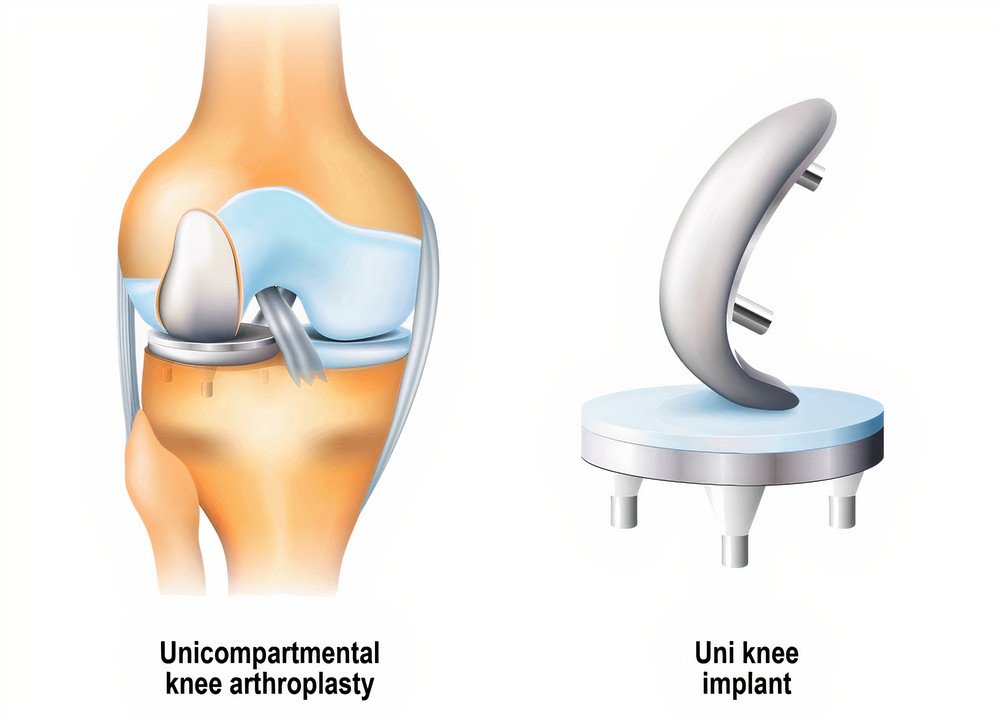Partial knee replacement

Partial knee replacement is the second most frequently operated surgery after TKR for patients suffering from knee pain. It is believed that trauma, osteoarthritis, and old age are the most reported causes of limited knee joint damage leading to partial knee replacement. Thus, if your pain is located almost entirely on either the medial or lateral portions of your knee, you may be a candidate for a partial knee replacement. In the past, partial knee replacement was done to patients older than 55 years who were sedentary, while nowadays doctors consider potential candidates of partial knee replacement who usually complain of stiff knee and limited articulation as if their ligaments in their knee feel weak or torn.
In comparison to TKR, partial knee replacement is done in a less invasive way and outpatient settings. The major steps of partial knee replacement surgery are generally similar to those of total knee implants. Although doctors often recommend partial knee replacement for patients whose ligaments are intact and strong, they tend to perform total knee replacement for those who suffer from rheumatoid arthritis. The duration of -partial knee replacement surgery is shorter than that of total knee replacement. The healing process is faster after partial knee replacement and the patient feels more like a normal knee than total knee replacement.
